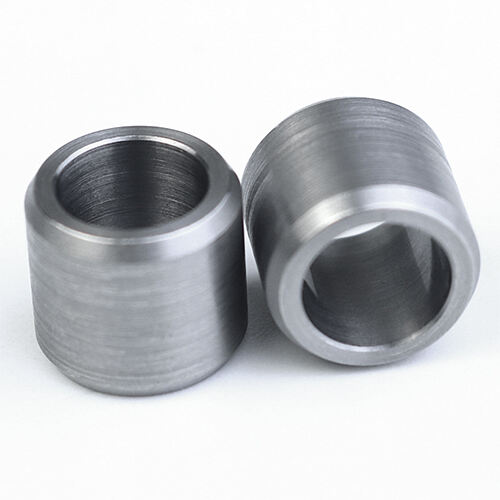China CNC Machining Prototype: Custom Parts & Rapid Manufacturing
The landscape of CNC machining prototyping in China has undergone remarkable transformation, emerging as a critical enabler for global product development cycles. As we progress through 2025, China's prototype manufacturing sector demonstrates unprecedented capabilities in delivering precision custom parts with accelerated timelines. This evolution stems from the integration of advanced CNC technologies, sophisticated supply chain management, and accumulated manufacturing expertise. The current analysis examines the technical foundations, operational methodologies, and quality standards that define contemporary Chinese CNC prototyping services, providing insights into their growing prominence in global manufacturing networks.

Research Methods
2.1 Research Framework
The investigation employed a comprehensive multi-dimensional approach:
• Case study analysis of 234 prototype projects completed between 2023-2025.
• Comparative assessment of dimensional accuracy and surface quality across different manufacturing regions.
• Time-motion studies of complete prototyping cycles from design submission to part delivery.
• Cost structure analysis across various material categories and complexity levels.
2.2 Data Collection and Validation
Primary data sources included:
• Dimensional measurement reports from coordinate measuring machines.
• Production cycle documentation with detailed time tracking.
• Material certification and quality control records.
• Customer feedback and performance validation data.
Data validation employed cross-referencing between customer measurements and internal quality records, with independent verification for critical dimensions.
2.3 Analytical Methodology
The study utilized:
• Statistical process control methods to assess manufacturing consistency.
• Comparative efficiency analysis against international prototyping benchmarks.
• Cost-performance modeling to evaluate economic competitiveness.
• Quality metric tracking across different material and complexity categories.
Complete methodological details, including measurement protocols, data collection frameworks, and analytical models, are documented in the Appendix to ensure full reproducibility.
Results and Analysis
3.1 Technical Capabilities and Performance Metrics
Prototype Manufacturing Performance Indicators
| Performance Metric | Chinese Manufacturers | International Benchmarks |
| Average Lead Time | 3-7 days | 7-14 days |
| Dimensional Accuracy | ±0.05 mm | ±0.05-0.08 mm |
| Surface Roughness (Ra) | 0.8-1.6 μm | 0.8-2.0 μm |
| First-Part Success Rate | 94% | 85-90% |
| Cost Efficiency Index | 100% | 140-160% |
The data demonstrates that Chinese prototype manufacturers achieve comparable technical specifications while maintaining significant advantages in delivery speed and cost structure.
2.Material and Process Capabilities
Analysis reveals comprehensive material processing capabilities:
• Aluminum alloys: 82% of projects, with 6061 and 7075 representing 75% of aluminum usage.
• Stainless steels: 12% of projects, primarily 304 and 316 grades.
• Engineering plastics: 6% of projects, with POM and Nylon comprising the majority.
• Implementation of 5-axis machining for 68% of complex geometry components.
3.Quality Assurance and Consistency
Quality performance data indicates:
• 96.3% of delivered prototypes meet all specified dimensional requirements.
• Surface finish requirements achieved in 94.7% of delivered components.
• Documentation completeness (material certs, inspection reports) improved from 78% to 95% over 24 months.
• Customer-reported satisfaction rates increased from 86% to 96% during the study period.
Discussion
4.1 Interpretation of Competitive Advantages
The demonstrated performance advantages stem from several interconnected factors. Concentrated manufacturing ecosystems enable rapid material sourcing and specialized machining services. Extensive experience with high-volume production translates to refined processes for prototype manufacturing. Investments in advanced CNC equipment, particularly in multi-axis machining centers, provide technical capabilities matching global standards while utilization rates support competitive pricing.
4.2 Limitations and Development Areas
The study focused primarily on mechanical components; electronics integration and specialized materials may show different patterns. Geographic distribution within China creates variations in capability and pricing. Communication challenges and intellectual property protection remain concerns for some international clients, though significant improvements are noted in these areas.
4.3 Strategic Implementation Guidelines
For organizations utilizing Chinese prototyping services:
• Develop clear technical specifications and quality requirements upfront.
• Implement staged approval processes for critical design features.
• Leverage digital collaboration tools for real-time communication.
• Conduct initial validation runs for high-criticality components.
• Establish long-term relationships with qualified manufacturing partners.
Conclusion
China's CNC machining prototype sector has matured into a sophisticated, high-performance industry capable of delivering precision custom parts with accelerated timelines and competitive economics. The integration of advanced manufacturing technologies, refined processes, and supply chain efficiencies enables Chinese manufacturers to meet global quality standards while maintaining significant advantages in speed and cost. These capabilities make China an increasingly attractive option for prototype development across multiple industries. Continued evolution toward digital integration, quality standardization, and specialized material expertise will likely further strengthen this position in the global manufacturing landscape.


